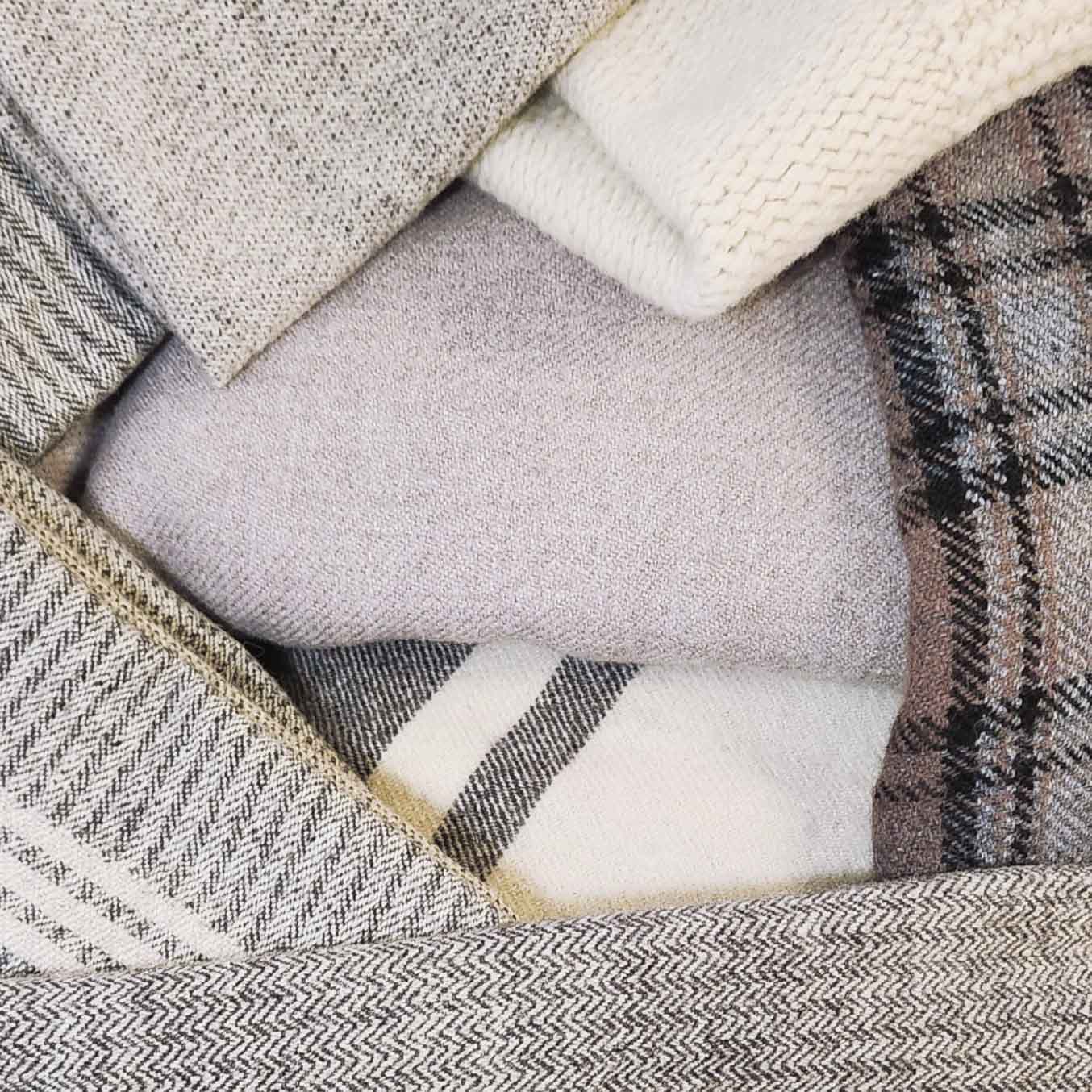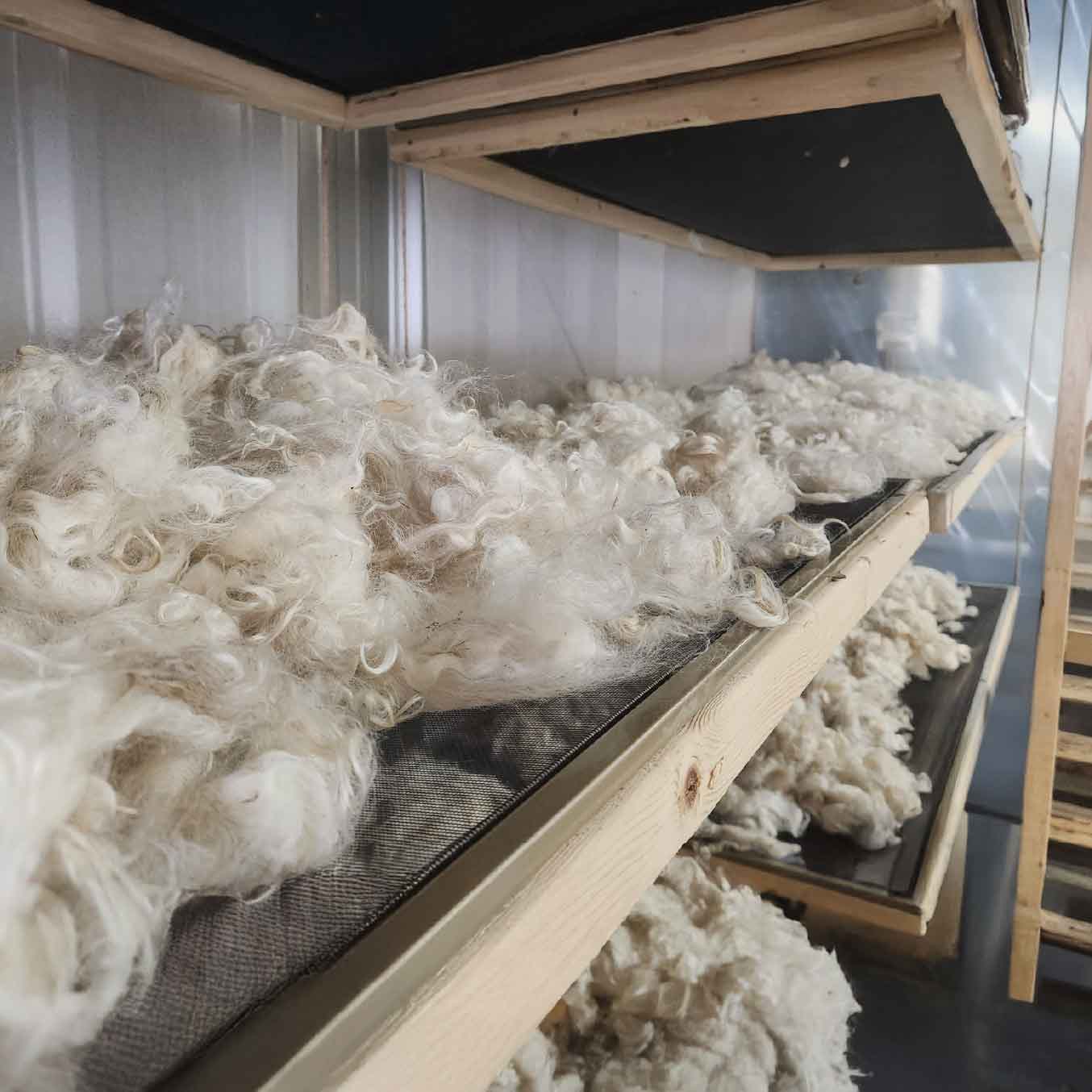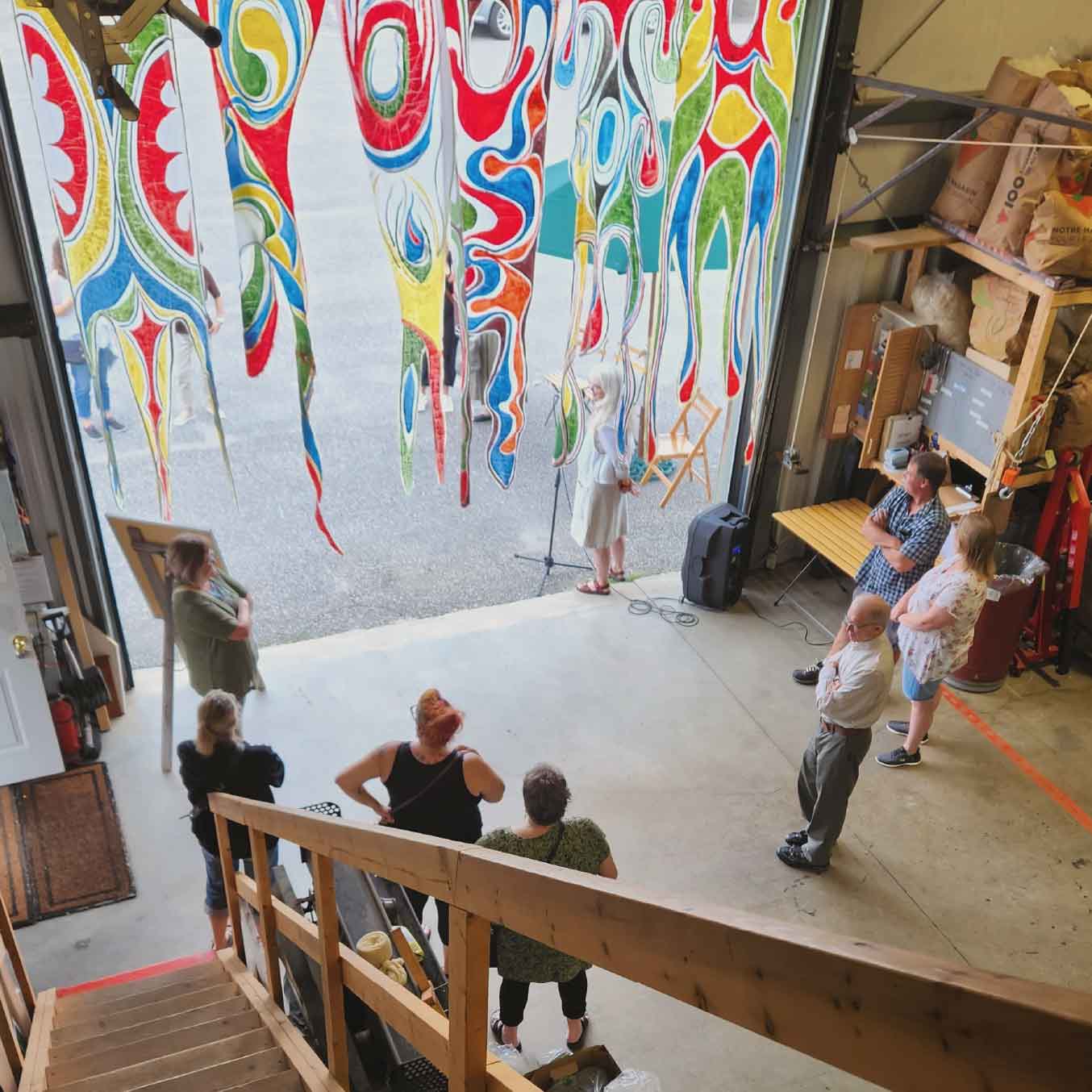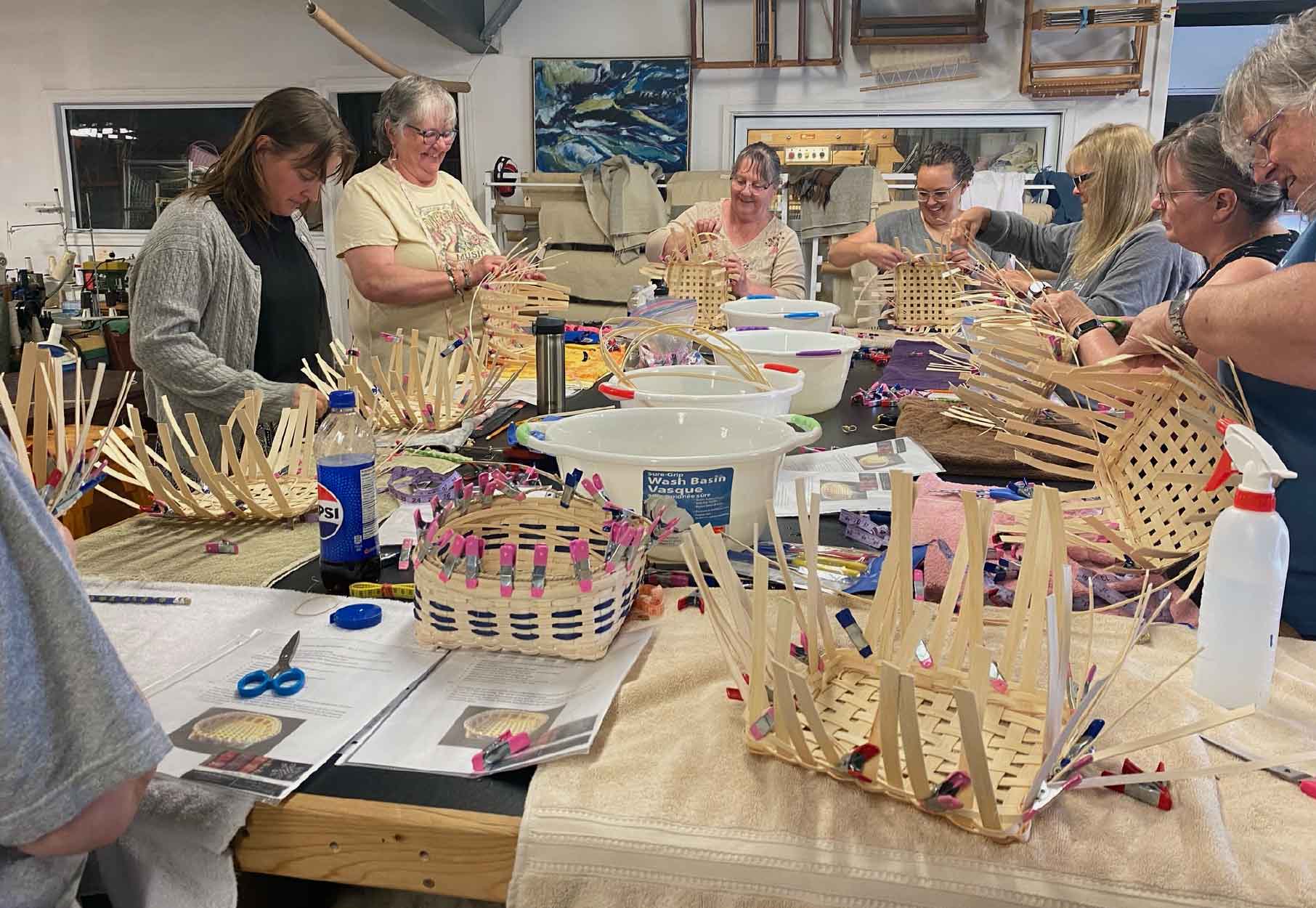Wave Fibre Mill proudly partners with small Canadian farms to process their wool and offer high-quality, locally made products. As part of the growing Fibreshed Movement, our work reflects a deeper understanding: wool can, and should be grown, processed, and used right here at home.
Thanks to decades of breed diversification, Canadian farms now produce a rich variety of fibres: from soft, “next-to-skin” wools, to durable long wools for outerwear, and strong mohair for socks. Canadian wool is uniquely positioned to meet the rising demand for sustainable, local materials.
“We are seeing an increase in inquiries for Canadian wool in general, and more specifically, wool that has been processed without chemicals.” — Wave Weir, Wave Fibre Mill
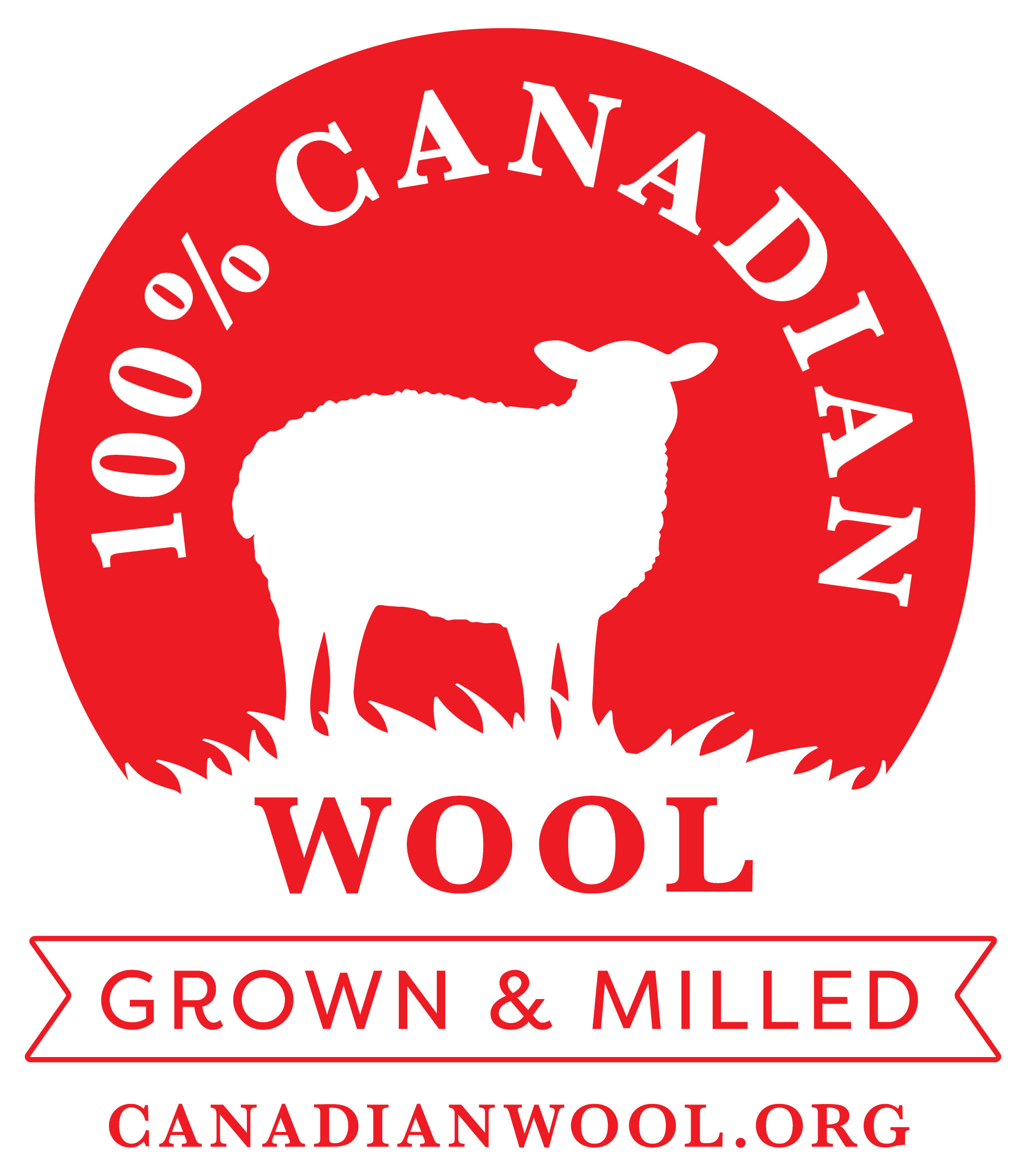
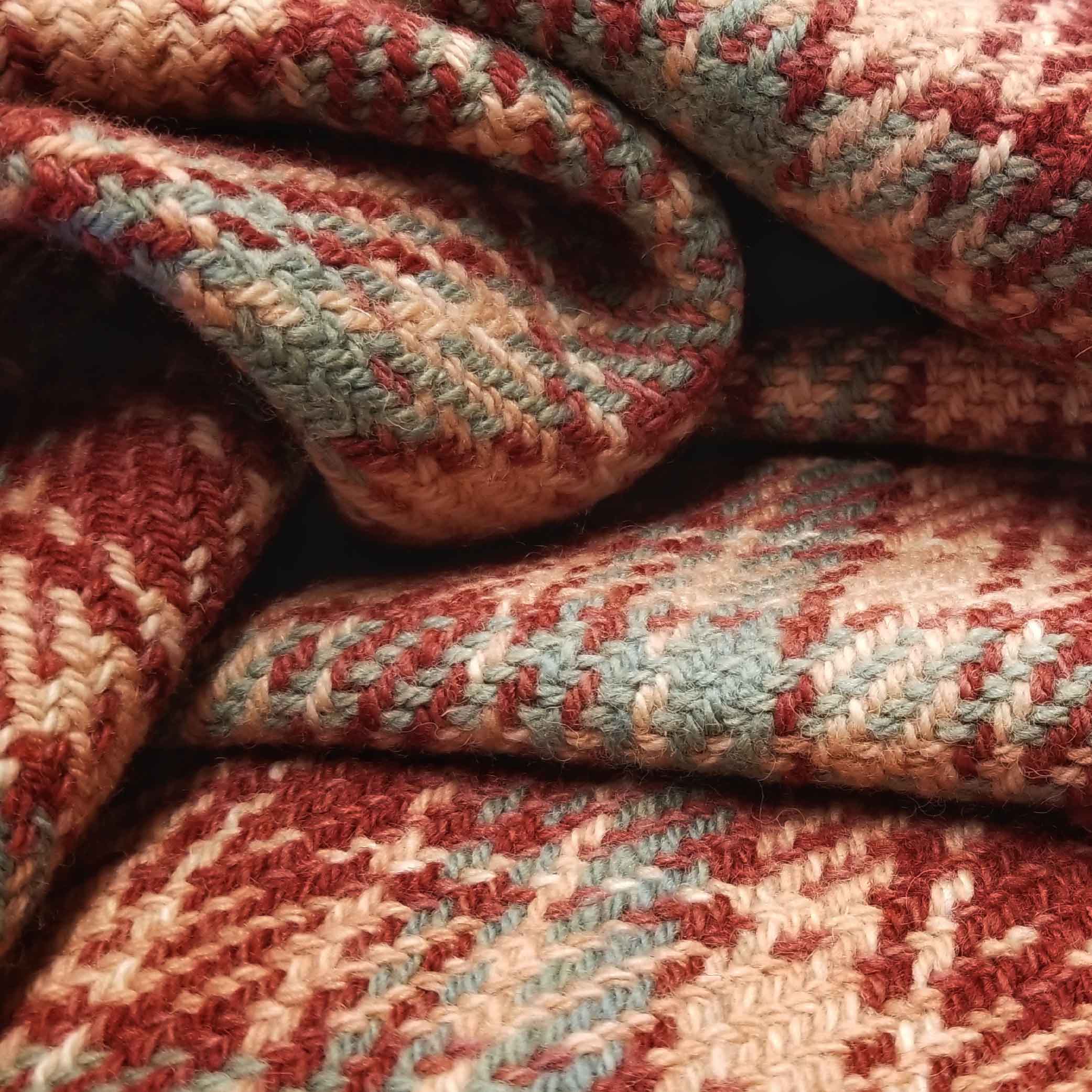
Why Choose Locally Grown and Processed Products?
There are many meaningful reasons to choose Canadian-grown fibres and locally made products:
- For the beauty and qualities of natural Canadian fibres.
- To support a resilient, regional textile economy.
- To strengthen the long-term viability of local farms.
- To create quality local employment for mill workers, artisans, and entrepreneurs.
- To make choices that align with the ecological limits of our planet.
- To support regenerative farming practices that sequester carbon and restore soil fertility.
- To embrace products that are biodegradable, non-toxic, and free of synthetic plastics.
- For our health and wellbeing.
The Fibreshed Movement
“There is a major disconnect between what we wear and our knowledge of its impact on our land, air, water, labour and human health. Even those who value access to sage, local, nutritious food have largely overlooked the production of fibre, dyes, and the chemistry that forms the backbones of modern textile production. While humans are 100 percent reliant on their second skin, it’s common to think little about the biological and human cultural context from which our clothing derives. Almost a decade ago, weaver and natural dyer Rebecca Burgess developed a project focused on wearing clothing made from fibre grown, woven, and sewn within her bioregion of North Central California. As she began to network with ranchers, farmers, and artisans, she discovered that even in her home community there was ample raw material being grown to support a new regional textile economy with deep roots in climate change prevention and soil restoration. A vision for the future came to focus, combining right livelihoods and a textile system based on economic justice and soil carbon enhancing practices. Burgess saw that we could create viable supply chains of clothing that could become the new standard in a world looking to solve the climate crisis.”
Rebecca Burgess, 2019, Fibreshed.org, March 11, 2022,
https://fibershed.org/community/fibershed-the-book/
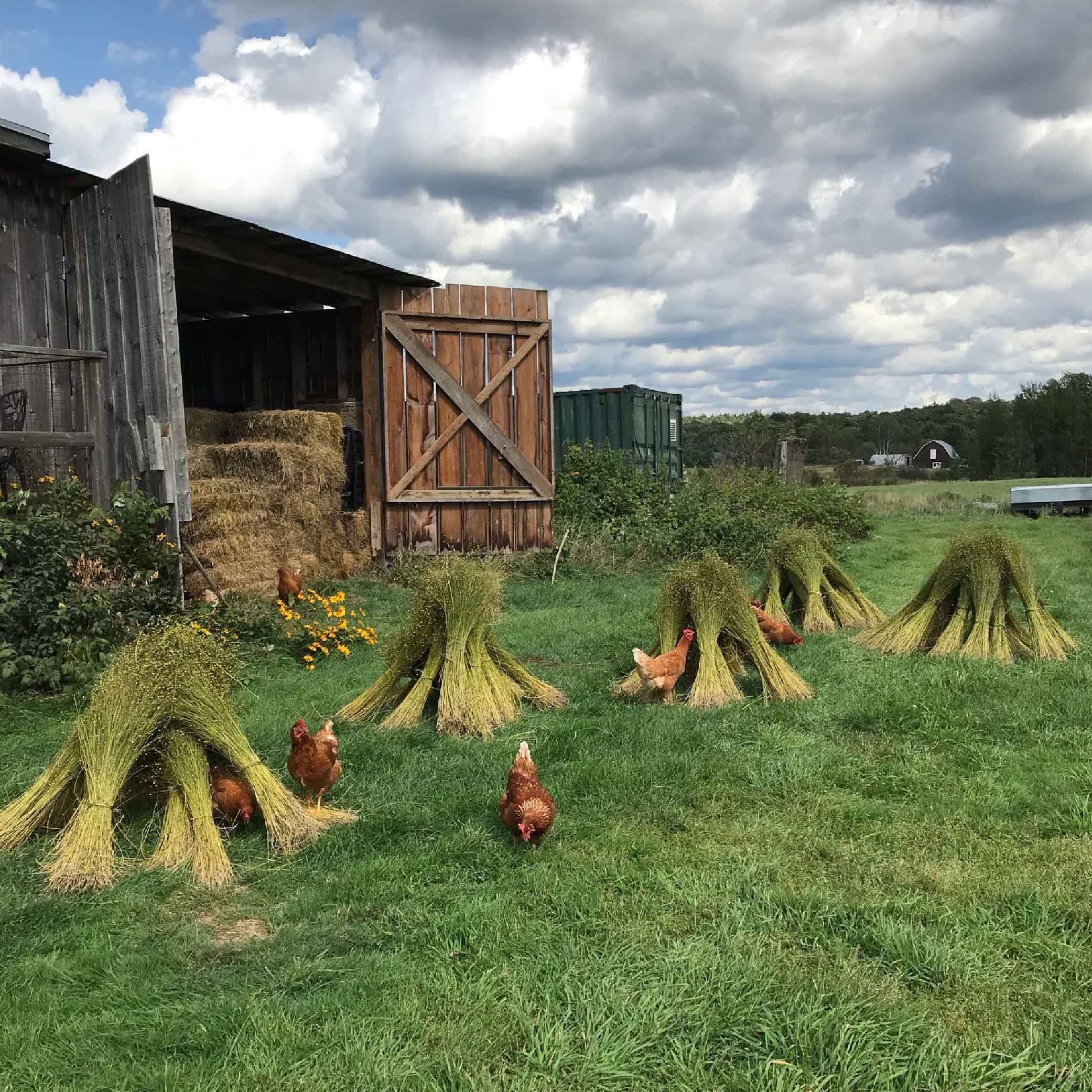

Local and Regenerative:
Fibresheds are geographically defined, natural fibre production areas. They prioritize locally sourced, natural fibres and strive for regenerative practices, aiming to enhance the soil, biodiversity, and local economies. WFM has chosen to define our Fibreshed as being from Ontario.
Community Building:
Fibresheds foster connections between all stakeholders in the textile system, from producers to consumers, promoting collaboration and a sense of shared responsibility.
Circular System:
The concept of a fibreshed emphasizes a closed-loop system, where waste from textiles is minimized and, ideally, recycled back into the agricultural cycle as compost supporting new growth.
There are currently 79 Fibreshed affiliates active in 18 countries and four continents around the world.
